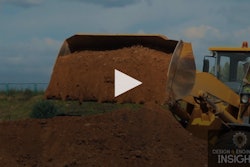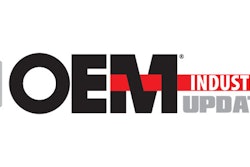
responses submitted by Amy F. Rice, CEO, Sy-Klone International
Global Markets, Government & Trade
What are the key global markets your company sees as growth opportunities and why?
The international mining industry is seeing an increase in demand for cab air quality systems across all types of machines. This trend represents a strong growth opportunity for OEMs to offer advanced air filtration options direct from the factory, as well as generate aftermarket part sales and installations for local dealers. Mining companies in Australia, North America, Africa, South America, and regions of Europe are actively addressing air quality issues. The growth in these markets is driven by an increased interest in operator health and safety, and a forthcoming global air quality standard for the mining industry, ISO 23875. OEMs and their end-users are actively working with our team to understand the forthcoming standard and meet this demand on new machines by expanding first-fit options for high-efficiency filtration, pressurization, and precleaning systems which comply with the ISO standard.
Over time, we expect similar standards in construction and other heavy-debris environments to be adopted across various countries, such that OEMs tackling cab air quality for mining now will be well-positioned for extension to other industries and equipment.
Are there other policies you are keeping your eye on that could impact (or have already impacted) your company and the industry?
As mentioned, ISO 23875 is a draft international standard, to be published as early as Q1 2021, which creates a consistent approach to operator cab air quality in the mining industry. Requirements outlined in the standard are designed to protect machine operators from harmful respirable particulates found outside of the operator cab, through engineering control requirements and air quality performance tests.
ISO 23875 is unique in that it is a lifecycle standard, meaning it identifies requirements from initial design, to production, and throughout the regular operation and maintenance of the machine. Through this cycle, the responsibility for meeting specific performance requirements are identified and transferred from OEM to the machine owner.
The standard outlines specific air quality performance requirements within the cab, including CO2 levels, maximum particulate concentrations, recirculation system efficiency as measured through the length of time it takes to return to acceptable particulate levels within the cab, and sustained cab pressurization. Additional requirements include a permanent monitoring system that continuously monitors CO2 and pressurization levels within the cab and alerts the operator when either is outside of permissible levels. A certificate of compliance will be required for all new and retrofitted machines that meet the requirements of the new standard.
Sy-Klone is helping OEMs, mining companies, and aftermarket service providers meet these requirements with the Sy-Klone RESPA cab air quality system, high-efficiency RadialSHIELD HEPA filters, and the RESPA Advisor cab monitor, scheduled for release in early 2021.
Standards benefit all parties involved. First, OEMs that provide a full solution to meet the standard’s performance requirements will create additional first-fit and aftermarket dealer revenue streams and establish themselves as market leaders in cab air quality. OEMs benefit from reduced warranty liability from aligning with the standard, as good air quality reduces the dust and debris build-up on electronics and the A/C evaporator core. In addition, OEMs benefit from a consistent, global standard, allowing a single cab or platform to be created and sold across the world, as opposed to making smaller quantities of regionally specific cabs to address machine tenders and specifications informed by local regulations. Next, machine operators benefit from improved health from lower exposure to harmful dust and debris, as well as improved comfort from more consistent A/C system performance. Third, mining companies benefit from long-term workforce health and tenure. Additionally, mining companies will experience increased machine uptime and decreased maintenance costs as filter replacement cycles are extended, and A/C systems have extended maintenance intervals.
READ MORE: State of the Industry 2020
Impacts of COVID-19
Have the challenges presented by the COVID-19 crisis brought to light any potential opportunities for change or improvement within your company, or the industry?
Air quality is at the forefront of everyone’s mind. As more industries return to work and job sites around the globe begin to reopen, creating and maintaining a clean air work environment is paramount.
There is not an easy work-from-home option for the machine operators that keep our global economy moving in the mining, construction, waste, and other industrial sectors. The pandemic has provided a swift and strong reminder of the importance of heavy equipment operators to our essential industries. COVID-19 has been an accelerant to advance engineering, safety, and product innovations—particularly in the area of clean air—that keep machine operators safer and able to perform their jobs.
The pandemic illustrates the need to advance air filtration effectiveness to arrest even the smallest particles and debris. The COVID-19 virus is an extremely small nanoparticle, ranging in size from 60-140 nanometers (nm). For context, that is 33,000 times smaller than a pollen spore, and 100,000 times smaller than a human hair. Viruses, like COVID-19, and even influenza (80-120 nm), can be difficult to arrest, but, as we employ filters that are effective against particles the size of a virus, we will also better protect against common hazardous particles found at worksites, such as diesel particulate matter and respirable crystalline silica (300-10,000 nm).
Our team recently launched a new generation of Sy-Klone RadialSHIELD filters for heavy-equipment engines and operator cabs. The HEPA version is 99.95% effective at stopping COVID-19-sized particles. Advancements in Sy-Klone’s filter media, design, and engineering are making it possible to reduce the risk of airborne exposure to viruses and other harmful particulates inside of an enclosed environment, like a machine operator cab, or even a control room, laboratory clean-room, bus, or off-road truck.
What, if any, long-lasting effects do you think the pandemic could have on the industry?
As we navigate the impacts of the pandemic on work and home life, my hope is that our industry remembers what matters most—the health and safety of our workforce. We want to ensure that our employees and our customers’ employees leave the job site the same way they showed up, healthy and fit for work. As an industry, we owe it to our team members to provide a safe workplace. Our team at Sy-Klone is committed to advancing safe industrial worksites by developing and introducing safety interventions, design elements, and product advancements to provide clean air and comfort inside of machine operator cabs.
Data, IoT & Connectivity
How will the role of the Internet of Things (IoT) and data continue to progress in the coming years?
Data is important for managing effective industrial worksite safety programs and preventative machine maintenance initiatives.
Our team is advancing monitoring systems, including the integration of sensors, to better manage the operator cab environment. The new Sy-Klone RESPA Advisor cab monitoring system will actively measure CO2 and cab pressure, alerting the operator when either goes outside of the set permissible limits. During the development process, we have evaluated sensors, components, and their placement and performance in rugged environments to achieve the highest level of accuracy, quality, and durability.
Real-time feedback to the machine operator, as well the ability to access system data by additional stakeholders, will enable industrial hygienists, cab engineers, and HVAC vendors to review data for health and safety programs, maintenance troubleshooting, and future product and cab engineering advancements. And this set of tools can be expanded in the future with additional cab- and machine-performance monitoring capabilities. IoT-enabled aggregation of data across many health and performance variables will provide an extra layer of protection and transparency between OEMs and their customers, and end-users and their employees.




















